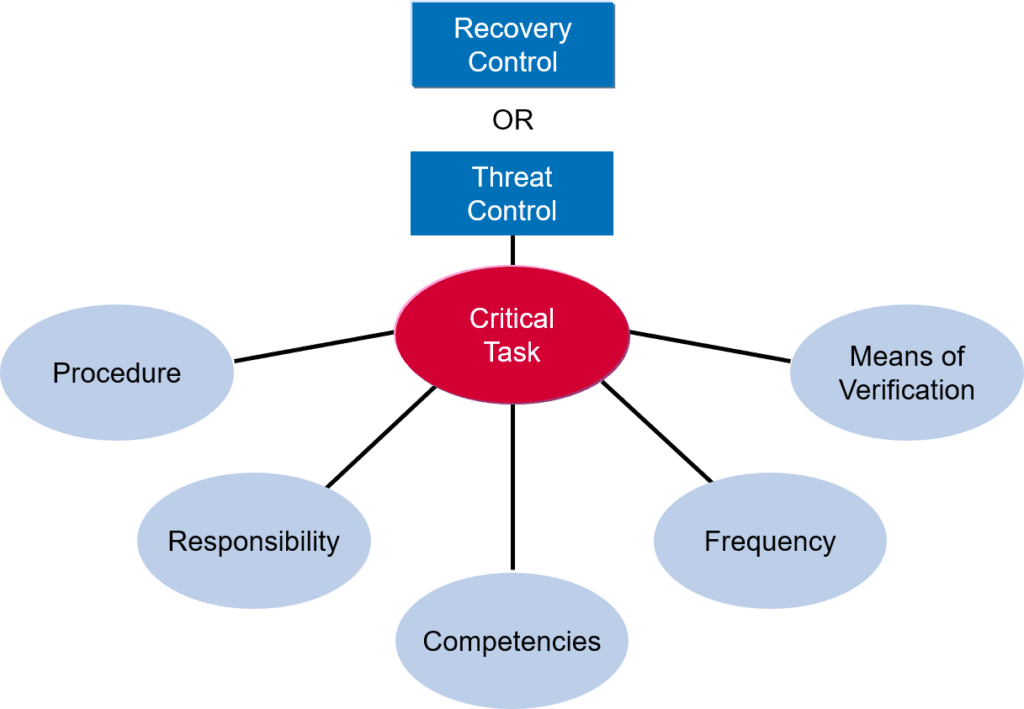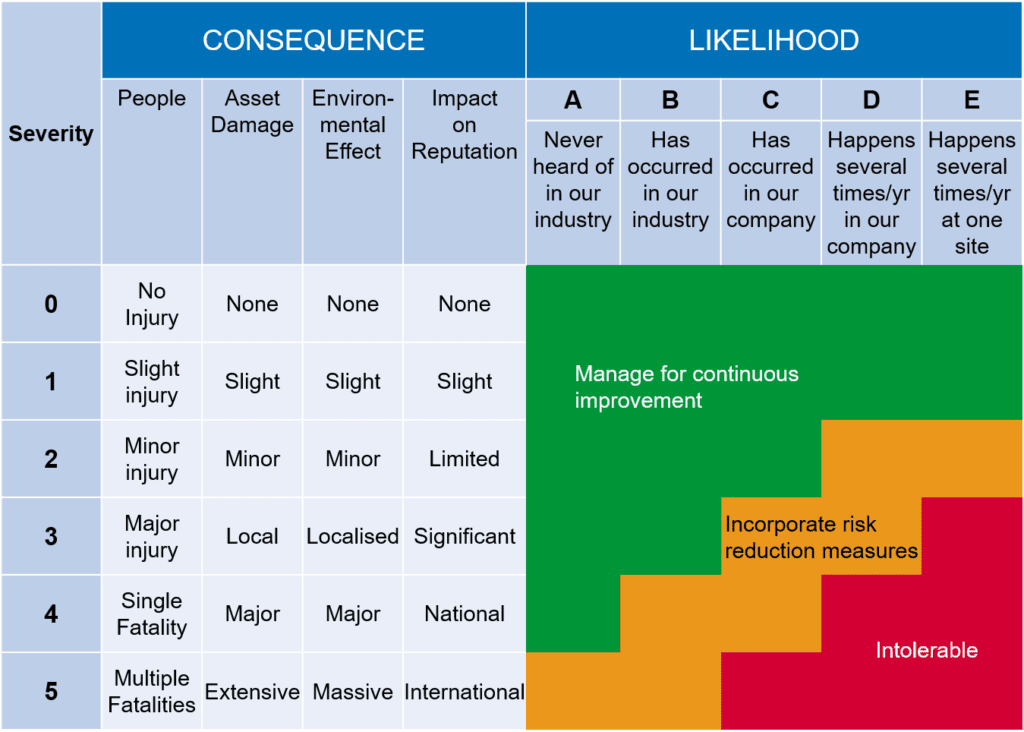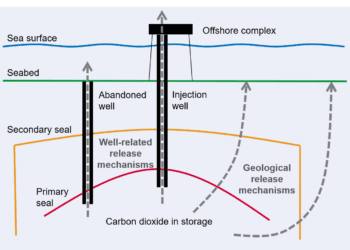Demonstrating how hazards are being properly managed
Many large companies operating hazardous facilities are required either by law or by their own corporate standards to demonstrate that the health, safety and environmental hazards associated with their operations are being properly managed.
This typically means they need to conduct a formal risk assessment, demonstrating that the controls are in place for a hazard at a particular moment in time, together with a separate description of the system for ongoing management control.
What is invariably missing is the direct and visible link between the controls as they are today, and the procedures and people responsible for ensuring they will continue to be effective tomorrow.
Risktec consultants are pioneers in the use of the “bow-tie” methodology to overcome this problem.
The bow-tie diagram is an extremely powerful representation of risk control and lends itself very well to hazard management.
By visually displaying the hazard, its causes and consequences, and the controls to minimise the risk, the bow-tie can be readily understood at all levels in an organisation, from senior managers to operations personnel.
Critical tasks which establish or maintain these controls are identified. Responsibilities for their execution and supervision are then assigned to positions in the organisation. It is these steps that demonstrate how the organisation’s management system ensures the ongoing management of hazards.
ASSESSING RISK
The key to any formal risk assessment is to identify the hazards arising from operations and the threats leading to the hazard. The risk exposure is predicted by defining the resulting impact on the business, combined with the likelihood of the impact occurring.
An example of a user-friendly risk assessment matrix is shown in Fig 1 and may be used at the outset to qualitatively assess the people, asset, environment and reputation risks. By avoiding probabilistic terms, such as IE-4 to IE-3 per year, the risk matrix is more widely understood.
Figure 1
THE BOW-TIE
At this point, the bow-tie diagram may be introduced (Fig 2). The left side of the bow-tie highlights the controls which prevent each cause of the hazardous event at the centre of the bow-tie. On the right side, similarly, are controls which mitigate against progression of the event to the worst case consequences.

Facilitated workshops involving people who are confronted with the hazard on a regular basis, supported by specialist technical advisers, have been found to be very effective at identifying the real controls and capturing current operational practice.
A major spin-off benefit of the workshops is that they stimulate communication between key stakeholders, whether from the company, contractors or external parties, who all have a role to play in managing a hazard.
“We found that involving our operational people in a field that has traditionally been fairly academic, really encouraged ownership of the process and certainly produced better results,” said Steve Cooper, Director of HSE at BOC Gases.
CRITICAL TASKS
Identifying the controls is insufficient in itself. The risk assessment is “static”, in other words it presents a snapshot of the controls at that moment in time only. So, to ensure that the controls will still be effective tomorrow, links are made to those “critical tasks” which put in place or maintain a control in the bow-tie diagram, as shown in Fig 3.

The tasks may be inspection, operational, maintenance or administrative. It is only by the timely performance of such tasks that an organisation can be assured that risks are being managed properly.
To “energise” the assessment and make sure that risk management becomes a real part of line management activity, it is essential to specify:
- who is responsible for each critical task
- competencies needed to ensure the task is carried out properly
- the procedure where the task is defined
- how it will be verified that the task has been undertaken properly, and at what interval
BALANCING CONTROLS
Ideally, the cost of controls should not exceed their potential benefit. However, quantitative measurement of the true costs and benefits is often difficult. The ultimate decision on the level of control usually rests with the line manager, who would be responsible in the event of a loss, and is typically reached by consensus of the group confronted by the risk.
While the management of risk often requires a thorough overlay of checks, there is need to ensure controls do not become restrictive and lead to excessive bureaucracy.
Indeed, the challenge within many companies is likely to be judging what controls continue to be necessary as more streamlined and flexible plant operating philosophies are introduced.
BENEFITS OF APPROACH
Widespread application across hazardous industries suggests that the success of the bow-tie approach can be attributed to:
- Recognition that effective risk management is only possible if people are assigned responsibilities for controls.
- The user friendly, graphical illustration of how hazards are controlled is readily understood at all levels in the organisation.
- Workshops which improve understanding of the risks and encourage ownership of the operational hazards.
- A formal methodology for demonstrating the highest standards of hazard management.
- Focusing on the practical implementation of the hazard management process at the operational level, so that it can be readily audited by corporate functions or regulators.
- Demonstrating not only what controls are in place, but why they will still be there tomorrow.
This article first appeared in RISKworld Issue 1.









